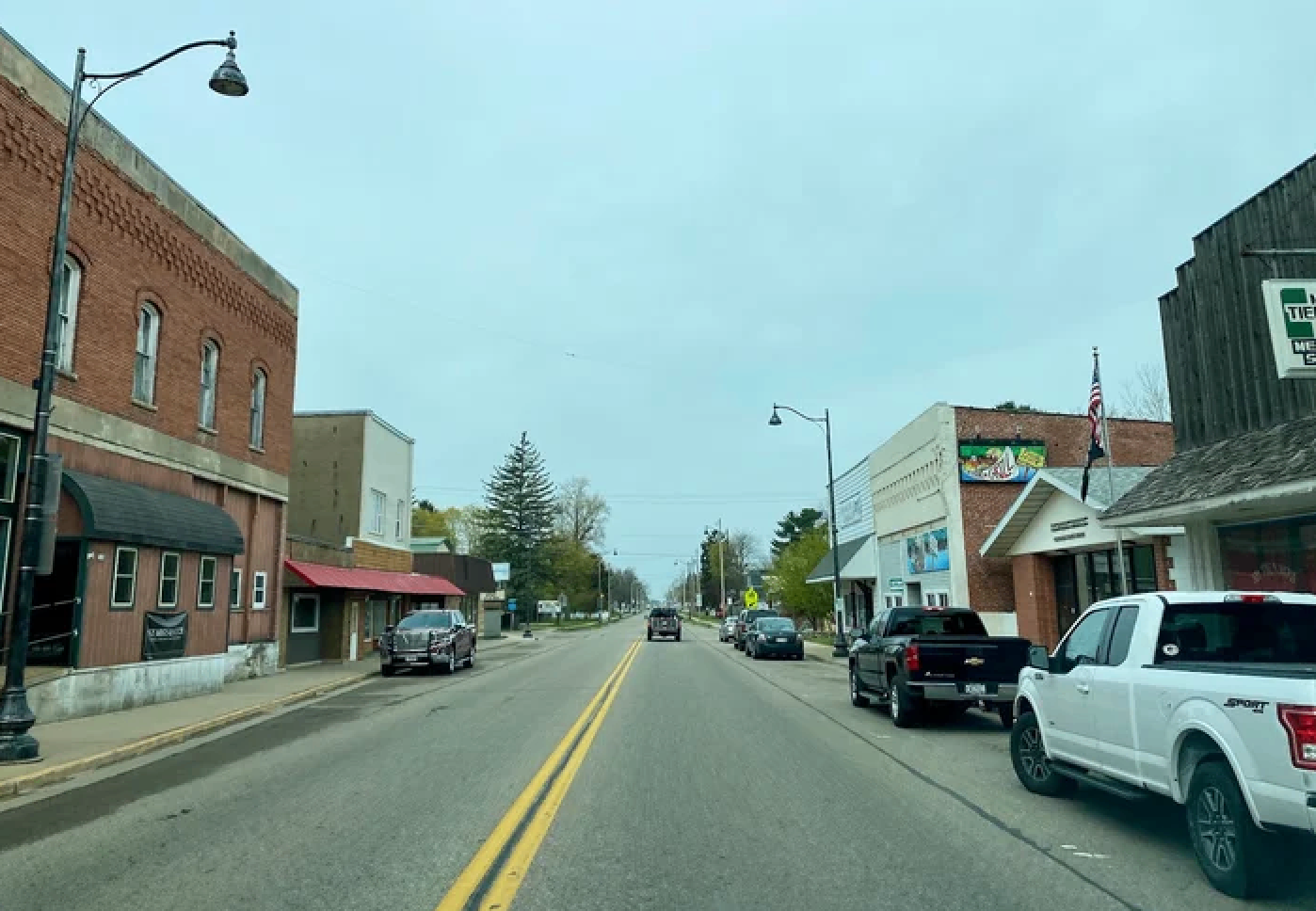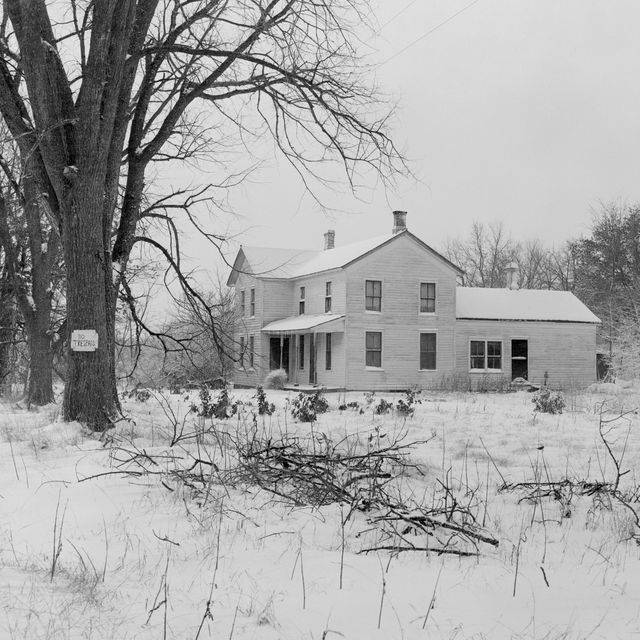Key Highlights
- The infamous Ed Gein house was a Plainfield farmhouse where the killer committed his shocking crimes.
- In 1957, police discovered the home was a gruesome crime scene filled with items made from human skin and remains.
- The house was mysteriously destroyed by fire in March 1958, just days before it was scheduled to be auctioned.
- Many local residents suspected arson, as they did not want the home to become a morbid tourist attraction.
- Today, nothing remains of the original home, and the property is privately owned.
- The story of the infamous killer continues to fascinate those interested in true crime.
Introduction
The Ed Gein story and Gein’s crimes are one of the most chilling chapters in American true crime history. At the center of it all was his isolated Plainfield farmhouse, a place that concealed unimaginable horrors. This "house of horrors" became as notorious as the man himself, sparking a grim fascination that continues to this day. Have you ever wondered what happened to that disturbing property? Let's explore the history of Ed Gein's home and discover what, if anything, remains of it today.
The Original Location of Ed Gein’s House in Plainfield, Wisconsin

Ed Gein's house was situated on a 195-acre family farm in the quiet, rural town of Plainfield, Wisconsin. The Gein family, including his older brother, Henry Gein, moved to this isolated property in 1914. His mother, Augusta, intentionally used the farm's seclusion to keep her sons away from what she considered a sinful world, creating a closed-off environment that would later become the backdrop for Gein's crimes.
This remote setting played a significant role in the story. What was once a simple family farm became the infamous site of one of history's most shocking criminal investigations involving a grave robber. Next, we will look at the exact spot where the house stood and how the property has changed since Gein's arrest.
Where Ed Gein’s House Stood: Exact Spot and Surroundings
The Gein family farm was located in the town of Plainfield, near a hardware store in Waushara County, Wisconsin, not La Crosse County where Ed was born. The property was rural and set back from the main road, contributing to the isolation that defined Gein's life, especially after his family had passed away. This is the location where authorities made their ghastly discoveries following the murder of Bernice Worden in 1957.
So, what is at the location of the Plainfield farmhouse today? After the house was destroyed, the land was eventually sold. Today, the 195-acre property is privately owned. There are no original buildings, markers, or memorials at the site. The land itself is just an empty lot, with trees and brush having grown over the area where the house once stood, reminiscent of scenes from The Silence of the Lambs.
Out of respect for the current owners and the local community, the exact location is not publicly advertised. The town has moved on from Gein's crimes, and the story of Ed Gein has ensured that the site is not a tourist destination. It remains a quiet piece of rural land, holding no visible trace of its dark past.
Changes to the Property Over Time

After Gein's arrest, the house stood as a grim crime scene related to the missing hardware store owner Bernice Worden. Its contents were cataloged, and the property was appraised at $4,700, scheduled for public auction on March 30, 1958. However, the house would never be sold. On the morning of March 20, 1958, a mysterious fire burned the farmhouse to the ground.
Many local residents believed the fire was arson. Rumors had been circulating that the house might become a ghoulish tourist attraction, an idea that angered the community. A deputy fire marshal’s report mentioned that a cleaning crew had started a large bonfire nearby to dispose of trash, but the flames were not close enough to have spread to the house. The cause of the fire was never officially determined.
When told about the fire, Gein reportedly shrugged and said, "Just as well." Though the house was gone, his 1949 Ford sedan was sold at auction to a carnival operator who charged people to see it, the son of Gein.
Timeline
Gein's Arrest
Date: November 16, 1957
Details: The farmhouse becomes a crime scene after police investigate the disappearance of Bernice Worden.
House Destroyed by Fire
Date: March 20, 1958
Details: The house burns down completely in a fire of suspicious origin, days before it was to be sold.
Scheduled Auction
Date: March 30, 1958
Details: The auction for the property was canceled due to the fire
Property Sold
Date: After the Fire
Details: The land was eventually sold, and Gein's car was bought by a carnival sideshow operator.
What Did Ed Gein’s House Look Like Before Its Destruction?
Before it became known for Gein's crimes, the Plainfield farmhouse was already in a state of decay. After what many consider the biggest blow, his mother's death in 1945, Gein let much of the house fall into disrepair. He boarded up the rooms his mother had used, including her bedroom, the downstairs parlor, and the living room, preserving them like shrines.
In stark contrast to these immaculate, sealed-off rooms, Gein lived in squalor in the few remaining spaces, primarily a small room next to the kitchen, which reflects the chilling life of the infamous 'Butcher of Plainfield.' You can imagine the chilling difference between the pristine, untouched areas and the chaotic mess where he lived and worked. The following sections will explore the layout and the disturbing discoveries made inside.
Photos, Descriptions, and Layout of the Farmhouse
Yes, photos of Ed Gein's house of horrors do exist. Following his arrest in 1957, investigators took numerous crime scene photos of both the exterior and the junk-littered interior. These black-and-white images offer a disturbing glimpse into the squalor Gein lived in, alongside memories of his older brother and the gruesome nature of his activities. They are the most direct evidence we have of what the Plainfield farmhouse looked like.
The layout of the farmhouse was peculiar due to Gein’s habits after his mother, Augusta Gein, died. He sealed off large sections of the home, creating a strange and unsettling environment. According to psychology professor Louis Schlesinger, "When you look at the crime scene photos, his house was an absolute disaster. But his mother's room was immaculate, just as it was when she died."
Key features of the layout included:
- His mother's bedroom and parlor were boarded up and perfectly preserved.
- Gein confined himself to just a few rooms, including the kitchen and a small adjoining room, which may evoke interest in Ryan Murphy’s anthology series Monster about his crimes.
- The rest of the farmhouse was filled with clutter, filth, and the horrifying results of Gein's crimes.
Infamous Discoveries Inside the House
The legends surrounding Ed Gein's house originate from the truly sickening discoveries made by police. Investigators found a horrifying array of household items crafted from human remains. These were not random acts of violence but calculated creations Gein made after committing several grave robberies and robbing local graves and committing murder. The crime scene was unlike anything law enforcement had ever encountered.
Gein had used body parts to create furniture, clothing, and utensils. He confessed to exhuming the bodies of middle-aged women who he thought resembled his late mother. Forensic psychiatrist Carole Lieberman stated, "He wanted to crawl into her skin." This desire manifested in the objects he made, turning the house into a personal museum of human anatomy and the macabre.
The list of items found is the stuff of nightmares and includes:
- Face masks and a lampshade made from human skin.
- Bowls made from skulls and chairs upholstered with skin.
- A belt made from human nipples and leggings fashioned from leg skin.
Conclusion
In conclusion, Ed Gein's house stands as a haunting reminder of one of America’s most notorious figures. The remnants of his home tell a chilling story that continues to intrigue and disturb, particularly when considering the disturbing items police discovered connected to his crimes. While the original structure may be gone, the site still holds a certain allure for those fascinated by true crime and history. By exploring the changes to the property over time and understanding what once existed there, we gain insight into not only Gein himself but also the cultural impact he has had. If you're curious to delve deeper into this story and its implications, consider visiting the site or researching further to uncover more about Ed Gein's legacy.

.png)



